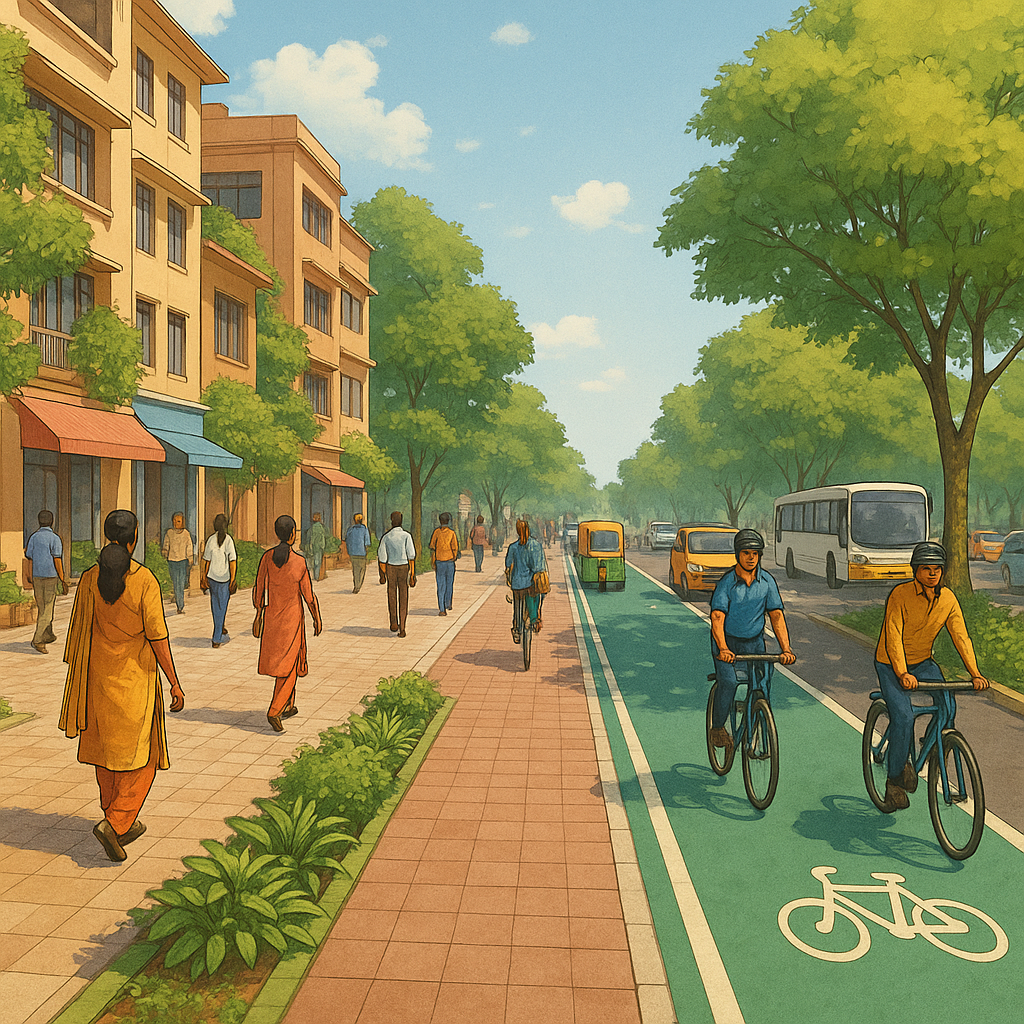Gandhinagar | Gujarat government is set to roll out international-standard Street Design Regulations (SDR) as part of its ‘Urban Development 2025–26’ initiative. The aim is to transform city roads into safe, green, and inclusive public spaces that prioritize pedestrians and non-motorized transport, drawing inspiration from urban centers like London, Paris, and Singapore.

According to senior officials in the Urban Development Department, the state has drafted a proposal to amend the General Development Control Regulations (GDCR) to make provisions for ‘complete streets’—urban thoroughfares that cater equitably to pedestrians, cyclists, public transport, and vehicles.
“In leading global cities, streets are not just for vehicles—they are vibrant public spaces and tourist-friendly zones. We aim to bring that transformation to Gujarat’s urban areas,” said a senior government official.
Also Read: URBAN SPRAWL IN INDIA: A Threat to Sustainable Development
Key Components of the Initiative:
- Mandatory Integration in Planning Documents: All new Development Plans (DPs), Town Planning Schemes (TPS), and Local Area Plans (LAPs) will be required to include complete street designs.
- Legislative Amendments: The Gujarat Town Planning and Urban Development Act (GTPUDA) will be amended to embed walkable, inclusive streets as a statutory requirement.
- Street Design Regulations (SDR): A comprehensive set of SDRs will be published to guide the design and execution of people-friendly streets across various urban environments.
- Pilot Projects in Key Cities: Selected roads in major cities will be redeveloped as model complete streets. A dedicated Challenge Fund will support cities willing to undertake these pilot initiatives.
The government will also facilitate policy changes to improve street management and streamline the enforcement of these new urban design norms. This initiative marks a significant shift from car-centric road design to people-centric urban mobility. By turning roads into shared, accessible, and green public spaces, the state hopes to enhance livability, promote sustainable transportation, and boost tourism.
